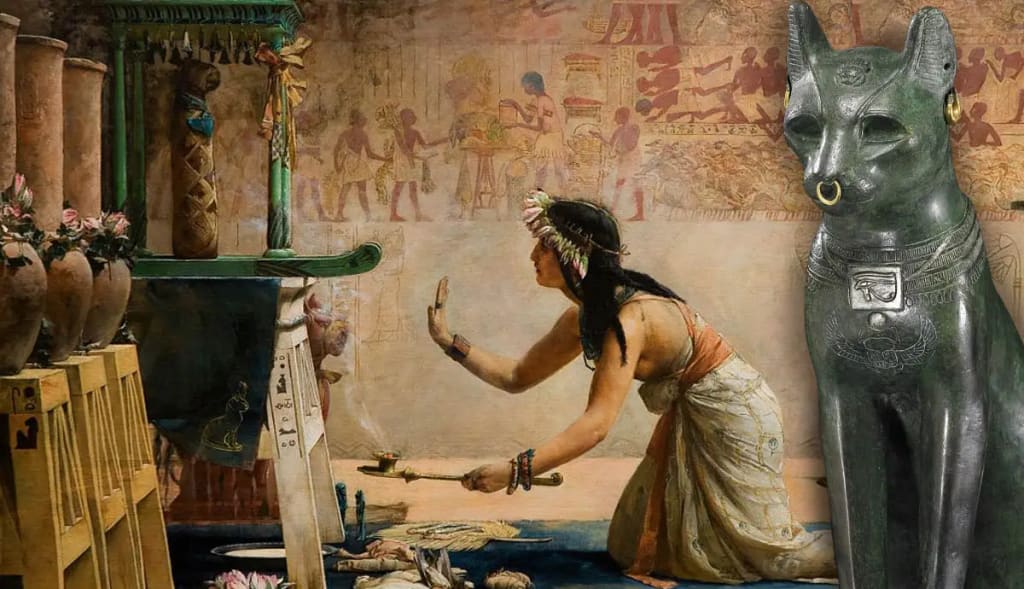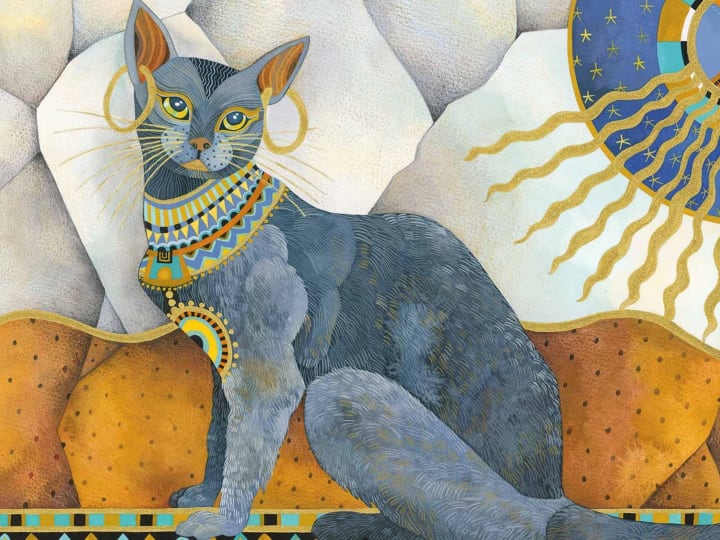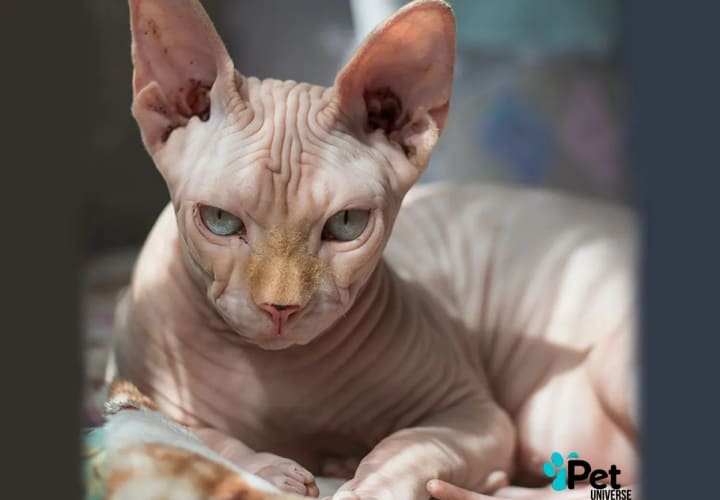Unraveling the Mystery: The Ancient Egyptian Obsession with Cats
Cats

The ancient Egyptian obsession with cats can be unraveled through their religious beliefs and cultural significance. Cats were revered in ancient Egypt as they were seen as protectors of the home and symbols of good fortune. The goddess Bastet, who was represented as a lioness or a cat, was worshipped as the goddess of home, fertility, and protection. Cats were also associated with the divine and were considered sacred animals. Their popularity as pets and their ability to protect against pests added to their significance in ancient Egyptian society. This deep-rooted cultural and religious symbolism surrounding cats in ancient Egypt helps to unravel the mystery behind their obsession with these feline creatures.
The museum has about 350,000 artifacts, but only 2% are on display. One highlight is a wooden painted Stella of the Divine Priestess of Amun. The artist shows transparency in the costume without using perspective. It's like a snippet of ancient life. I'm curious about cat worship, so we checked out a cat mummy mask. Egyptians linked cats to female gods like the Lioness. I talked to an expert, Emily Teeter, an Egyptologist. She studies languages, culture, and objects. She loves the weird stuff.
I am interested in the topic of cats in ancient Egyptian culture. Cats held significant cultural and religious importance in ancient Egypt. People revered cats to the extent that they would risk their lives to save them. There were rituals and mourning ceremonies for cats when they passed away. Cats were kept as pets and even had their own sarcophagi. The word for cat in ancient Egyptian is "Mew." Cats were also associated with the goddess Sekhmet, who was the daughter of the sun god Ra.

The feline is seen as a top deity in myths. Sekhmet was angry at humanity for disrespecting her father, Ra. She threatened to kill everyone, but the gods tricked her into getting drunk on red beer and falling asleep. Bastet is another goddess associated with cats, representing both happiness and anger. Cat mummies were treated with rituals like human mummies. Osiris, the god of the dead, was the first mummy. Egyptian texts mention cat temples where cats were raised for rituals. Priests would ring the necks of kittens for these rituals.
Isaac Museum has a lot of artifacts from Egypt. They show the human experience. The museum wants to understand the people who made the artifacts. They work with partners all over the world. They want to deepen social partnerships and research. The museum is not just about shiny things. They recreate the mindset of the people who created the artifacts. The ripple effect can cross millennia. It's important to acknowledge the past for growth.

Prune, the first hairless cat, was born in the 1960s in Canada. His unique appearance caught the attention of cat enthusiast Ridyadh Bawa. Bawa began selectively breeding Prune to preserve and develop the hairless trait. With dedication and care, he laid the foundation for the modern Sphynx breed.
In the 1970s, breeders worldwide joined efforts to enhance the breed's characteristics. They introduced new hairless cats and bred them with Prune's descendants. Through careful selection and breeding, the modern Sphynx breed began to take shape with distinctive traits like furless bodies, large ears, and expressive eyes.
The Sphynx breed gained recognition and popularity over time. Cat associations officially recognized the breed, solidifying its status. Today, Sphynx cats can be found worldwide, captivating owners with their playful and affectionate nature. From ancient Egypt to modern breeders, the Sphynx cat has become a beloved and cherished breed for cat lovers everywhere.
Conclusion :
In conclusion, the ancient Egyptian obsession with cats was deeply rooted in their religious beliefs, cultural practices, and daily lives. Cats were highly revered and worshipped as protectors, symbols of fertility, and companions to the gods. They were also seen as sacred animals that were believed to bring good fortune and ward off evil spirits. The ancient Egyptians went to great lengths to honor and care for their feline companions, even mummifying them to ensure a safe journey to the afterlife. This obsession with cats played a significant role in shaping ancient Egyptian society and continues to fascinate historians and archaeologists to this day.
About the Creator
Enjoyed the story? Support the Creator.
Subscribe for free to receive all their stories in your feed. You could also pledge your support or give them a one-off tip, letting them know you appreciate their work.





Comments
There are no comments for this story
Be the first to respond and start the conversation.